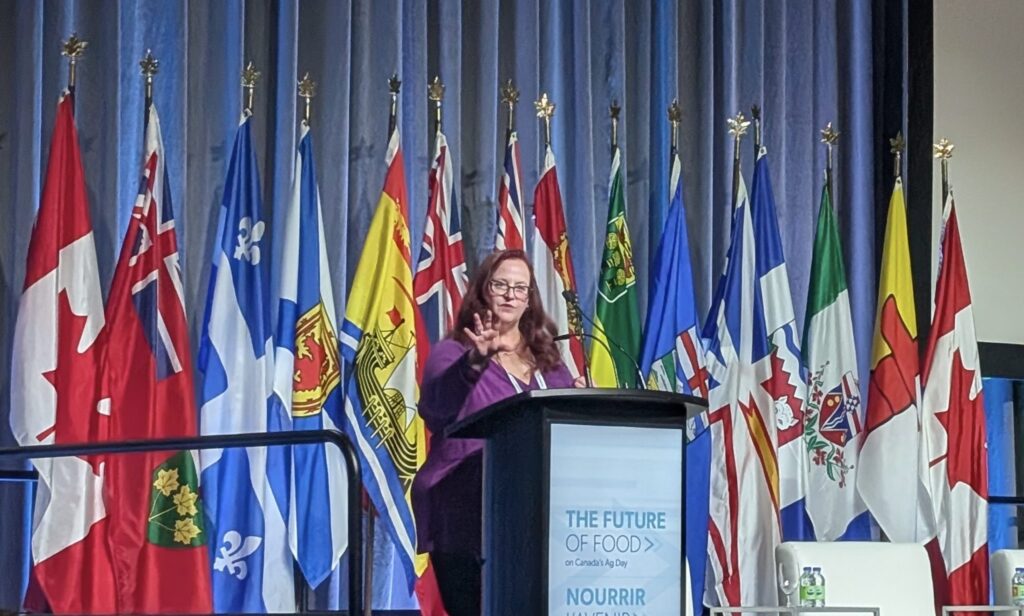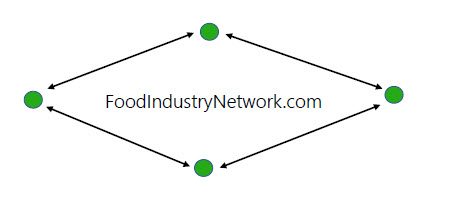Threats facing agriculture need a ‘Team Canada’ approach

Pride in Canadian agricultural production and a ‘Team Canada’ approach were front-and-centre at the Future of Food Conference in Ottawa.
Read Also


Supporting local farmers at the heart of the East Central Farm Show
The East Central Farm Show (ECFS) in Lindsay, Ont. prides itself on a grassroots foundation built on strong community ties.
Held annually on Canada’s Agriculture Day, the conference focuses on what Canada can do to shape the future of agriculture. Speakers throughout the day emphasized the need for collaboration in the face of U.S. tariff threats, a renewed connection to food and the importance of action in the agriculture community.
The palpable national pride began early, as Lisa Bishop-Spencer, executive director of Canadian Centre for Food Integrity (CCFI) led the packed room at the Rogers Centre in downtown Ottawa in singing O Canada.
Keith Currie, president of the Canadian Federation of Agriculture (CFA) delivered welcoming remarks and spoke about the anxieties around the threat of U.S. tariffs.
“Today as we gather here, we’re all too aware of the threats from our neighbours to the south,” he said. He urged the crowd against despair, however, and recognized “agriculture has always been at the centre of our society” and that agriculture is more resilient and more unified than it has ever been.
Currie compared the role of agricultural production in Canada to a kitchen in a home: “It’s in the centre of your house,” he said. “People gather around food and around agriculture products.”
Farm Credit Canada (FCC) CEO Justine Hendricks took the stage in a red Team Canada hockey jersey and acknowledged the challenges Canadian agriculture will face in 2025.
“I think we all better take a deep, deep breath,” she said. “I think it’s going to be a rough year.
“Just look at the headlines: Ukraine, the Middle East, labour disruptions, accelerating climate events. And then, of course, there is something new from south of the border.”
Hendricks said FCC has been in frequent contact with government, producers and financial partners to prepare for the mounting threat.
“We are prepared to respond quickly and effectively to whatever circumstances face us,” she said. “In short, we are ready to go.”
She urged the event’s attendees not to focus on the things they can’t control and called them to take action on the things they can.
“I am challenging this room … dig deep and prepare your response for this incredible test which lies ahead of us,” Hendricks said. “I am not talking about the threat of tariffs from the United States. I am talking about the threat of complacency right here within our borders.
“The question for us now is whether we, and I mean all of us, are willing to bet on ourselves and take this challenge and be part of not only team ag and food, but to be a part of team Canada.”
John Stackhouse, senior vice-president, Office of the CEO at the Royal Bank of Canada, echoed Hendricks’ sentiment of focusing on what we can control.
“None of us can control Donald Trump, none of us can control China, but there’s a lot of things we can control,” he said.
Part of this involves looking to the future instead of dwelling on the past.
“If I can stress one message, it is that the future of food is not going to look like the past of food,” Stackouse said, “and we need to come to grips with that here and now, because the future can be quite strong for us if we have those honest conversations.”
Bishop-Spencer spoke later in the day about how it will be important to encourage Canadians to reconnect with their food system.
“For some time now, we’ve been working at CCFI on a sector-wide effort to elevate Canada’s food system, an initiative to make food system a central part of Canada’s identity,” said Bishop-Spencer.
“Right now, with Canadians more engaged than ever, we have to leverage this moment to deepen their connection with the food system for the long term.”
She said CCFI’s efforts aim to “elevate Canada’s food system to become a core Canadian value, right alongside healthcare and education.”
“The system works so well that it usually operates in the background,” she said, “leading to passive confidence rather than active appreciation.”
Kallie Wood, president and CEO of the National Circle for Indigenous Agriculture and Food (NCIAF) spoke to the importance of including Indigenous producers in Team Canada.
“Long before the U.S. and Canada were even established, Indigenous peoples traded across Turtle Island,” Wood explained. “The long standing principles of the Jay Treaty of 1794 affirmed the rights of Indigenous peoples to freely cross the Canada-U.S. border for trade and commerce. This is critical to economic self-determinations on both sides of the border.”
She also emphasized the importance of land stewardship to keeping agriculture active and sustainable.
“It’s a delicate balance, and respecting and working with the natural system is key to sustainable agriculture.”
She said NCIAF has worked to accelerate Indigenous agriculture and agri-biusiness “while honouring Indigenous traditions and lands.”
“There is an untapped opportunity of investment into Indigenous agriculture in the country,” Wood closed by saying. “Indigenous peoples own a significant amount of land and are ready, willing and able to play a significant role in the agriculture story of this country.”
Evan Fraser, director of the Arrell Food Institute expressed frustration and hope when looking at what needs to be done in the ag sector.
“The frustration is that we haven’t got our acts together and done it,” he said. “But there’s nothing technically standing in our way, and that’s what fills with hope. We’re not saying we need to put a community on Mars in order to save the planet. We’re not saying we need a quantum computer or a cold fusion. … What we’re saying is we need investment and focus and discipline, but it’s entirely doable.”
Source: Farmtario.com

